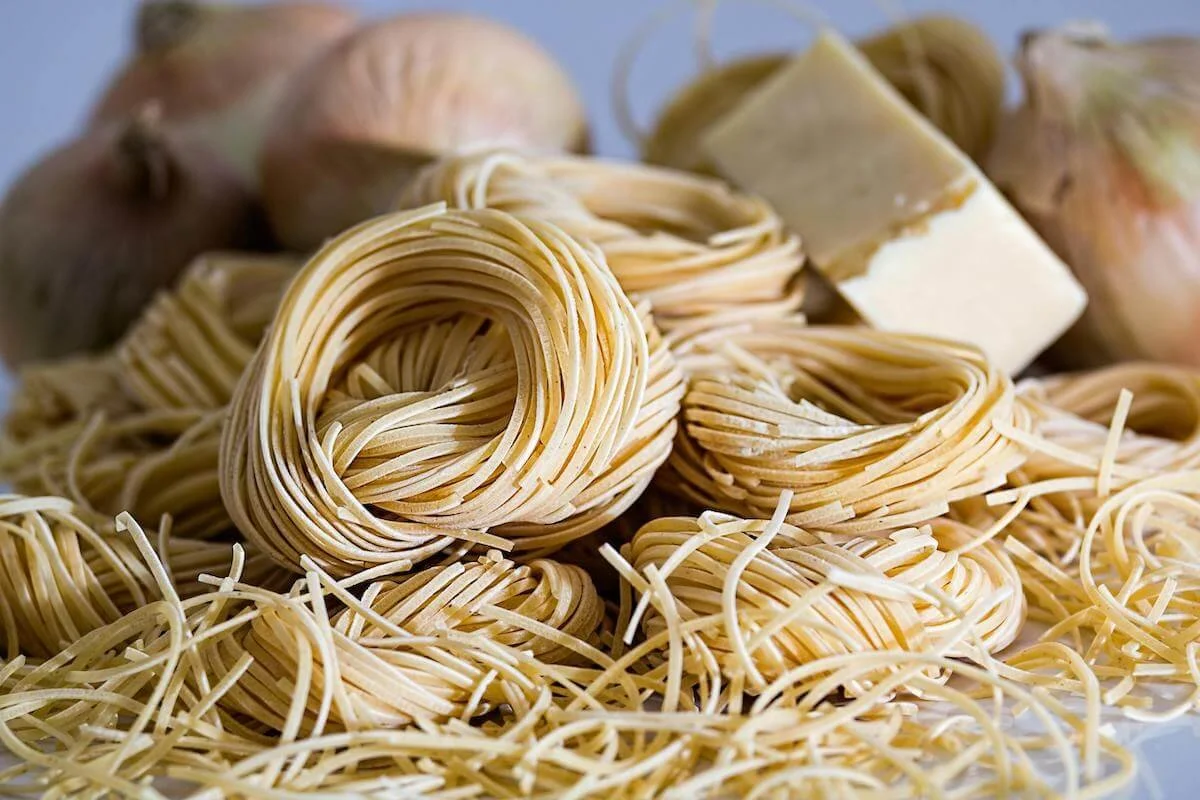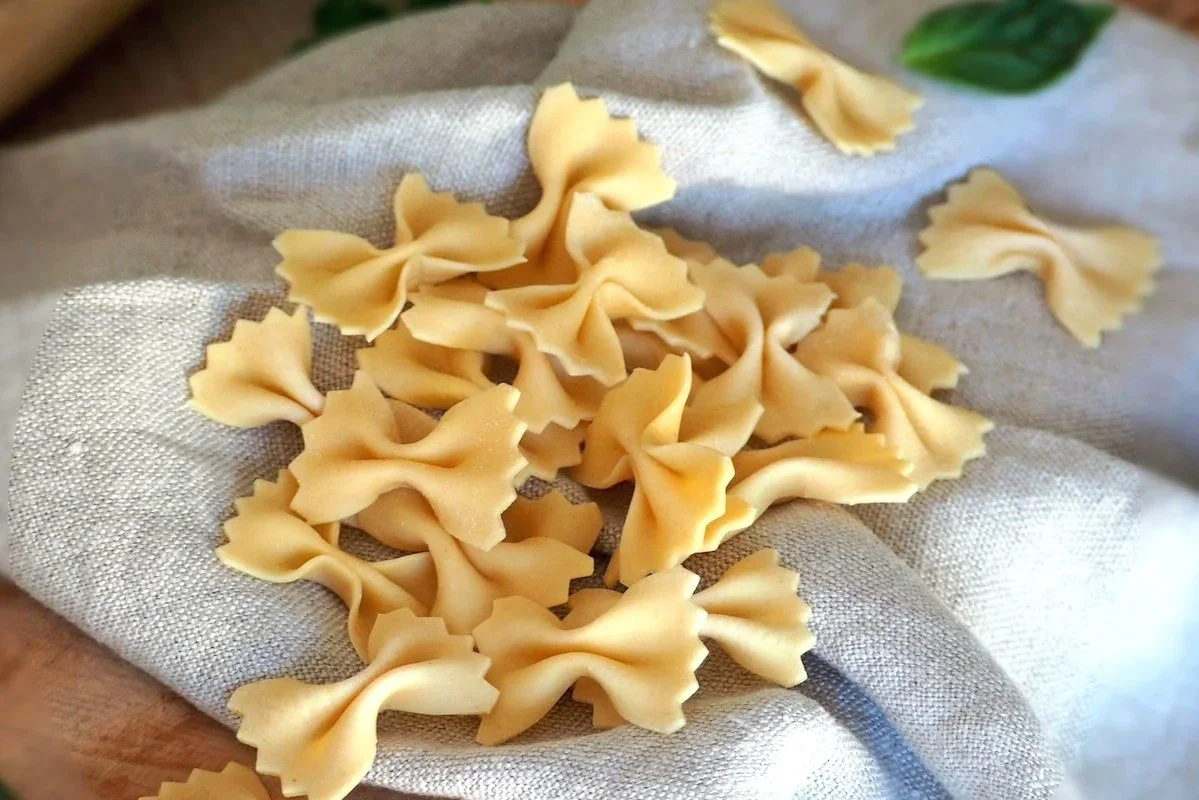Different Shapes of Pasta: Etna’s Complete Guide
Authentic Italian pasta is more than a dish. It’s a piece of Italy’s soul, shaped by centuries of regional craftsmanship. From Tuscany’s hand-rolled pici to Emilia-Romagna’s ribboned tagliatelle, every shape originated with intention: to cradle a particular sauce, honour a local ingredient, or echo a community’s culinary values. Across Northern Italy, Central Italy, and Southern Italy, pasta mastery became both an art and a cultural pillar. Understanding the connections between pasta shapes, sauces, and their regional roots isn’t just food wisdom; it’s paying respect to tradition itself. With so many different shapes of pasta, this corner of the culinary world is rich, diverse, and endlessly satisfying.
Long Strands and Ribbons (Pasta Lunga)
Long, delicate strands are some of the most popular pasta shapes in the world. Spaghetti, angel hair pasta (capelli d’angelo), and spaghetti alla chitarra are timeless classics. Their traditional pairings show why shape matters: spaghetti alla chitarra in Abruzzo is paired with rich lamb or pork ragù, while angel hair shines with simple sauces like aglio e olio or light tomato. In Rome, spaghetti finds its identity in cacio e pepe, carbonara, or amatriciana, proving how a thin noodle transforms with the right condiment.
When noodles become slightly wider: fettuccine, tagliatelle, or pappardelle, they take on a new role. In Bologna, tagliatelle al ragù alla Bolognese is the undisputed classic, while Tuscany favours pappardelle al cinghiale (wild boar ragù). Fettuccine in Lazio often appears with porcini mushrooms or cream-based condimenti. These ribbon-shaped pasta varieties are slightly thicker and sturdy, making them perfect for hearty sauces. Flat ribbons and flat noodles hold flavour on every surface, explaining why Italians love fettuccine and its cousins.
Tubes and Curved Shapes (Pasta Corta)
If you want a sauce to cling to every edge, reach for sturdy shapes like tubes. Penne pasta, mezze penne, rigatoni, and paccheri are classics. Rigatoni in Rome is inseparable from sugo alla pajata or amatriciana. In Naples, paccheri con sugo alla Genovese (made with slow-cooked onions and beef) is a regional treasure, while paccheri also appears with seafood like mussels or clams. Large tube-shaped pasta is perfect for baked dishes, filled with creamy or meaty sauces.
Slightly curved short pasta shapes, from elbow macaroni to mezze penne, are among the most popular pasta shapes worldwide. In Italy, maccheroni al forno is a Sunday favourite in the south, baked with tomato, béchamel, and mozzarella. These small pasta shapes are sturdy, slightly curved and slightly thicker, built for chunky meat sauces or layered baked dishes.
Spirals, Shells, and Playful Forms
Shapes with twists, curves, and folds add personality as well as purpose. Fusilli and fusilli col buco are excellent with pesto alla Genovese, because the spiral pasta captures the sauce’s basil, pine nuts, and olive oil perfectly. Conchiglioni (large pasta shells) are made to be stuffed (often with ricotta and spinach), then baked in tomato sauce. Smaller shell-shaped pasta varieties appear in Southern Italy, such as in Campania’s seafood dishes, where they catch creamy sauces or light tomato-based sughi.
Other shaped pasta carries cultural stories. Farfalle (bow tie pasta) is a northern shape, traditionally paired with cream and smoked salmon or light vegetable condimenti. Mafaldine, with its ruffled edges, originated in Naples and works beautifully with hearty meat sauces or seafood. Paccheri, broad tubes from Naples, take their name from the Italian word pacca, meaning “slap,” and are known for holding thick sauces. Even playful pasta varieties like wagon wheels (rotelle) or anellini are rooted in tradition, appearing in Sicilian timballo di anellini or in broth-based soups with beans.
Stuffed Pasta
Stuffed pasta is Italian ingenuity at its best. Ravioli, tortellini, and agnolotti are filled with cheese, vegetables, or meat, but their classic serving styles are precise. In Emilia-Romagna, tortellini in brodo is a Christmas tradition. In Piedmont, agnolotti del plin are dressed simply with butter and sage (burro e salvia). Ravioli is often finished with a light tomato passata or simple butter, so the filling remains the star. In Southern Italy, orecchiette (the “little ears”) are paired with broccoli rabe, a rustic and beloved dish that reflects its regional heritage.
The Art of Sauce and Shape
Italians consider the pairing of pasta and sauce an art form. A shape originated with a purpose, and pairing it incorrectly changes the dish’s identity. That’s why true ragù alla Bolognese belongs on tagliatelle, not spaghetti. Sauce and shape were designed together.
Thin strands: spaghetti, angel hair – suit olive oil, simple butter, fresh pomodoro, basil pesto, or cacio e pepe. Their fine texture carries simple sauces perfectly.
Ribbon shaped pasta: tagliatelle, fettuccine, pappardelle – carry ragù alla Bolognese, wild boar ragù, porcini mushroom sauces, or creamy Tuscan condimenti. Wider pasta noodles and flat sheets like lasagne are also perfect for thick sauces and baked dishes.
Tube shaped pasta: rigatoni, mezze penne, paccheri – belong with amatriciana, Genovese sugo, or baked maccheroni al forno. Large tube-shaped pasta carry chunky sauces inside, making every bite rich.
Spirals and shells: fusilli (spiral pasta), pasta shells – are perfect with basil pesto, seafood sauces, or creamy condimenti. Conchiglioni are traditionally stuffed with ricotta and spinach and baked.
Stuffed pasta: ravioli, tortellini – are best with butter and sage, broth, or light tomato. Tortellini in brodo and agnolotti del plin in butter are the traditional benchmarks. Their fillings are the focus, not the condiment.
This harmony between shape and sauce is at the heart of Italian cooking; it’s a craft perfected across regions and generations. Pasta is architecture for the mouth, and sauces are its design.
Pasta at Etna
At Etna, we celebrate the craft of authentic Italian pasta. Using durum wheat and fresh ingredients, our kitchen honours Italy’s culinary heritage while also showcasing seasonal specials. One week, you might discover tagliatelle al ragù alla Bolognese, the next conchiglioni stuffed and baked in tomato sauce. Dishes of our authentic Italian pasta are the perfect choice for sharing and creating a communal atmosphere for any event within our walls, from a vivacious family gathering to a large celebration and even an intimate date night. Our menu often rotates to highlight different pasta varieties and sauces, but each plate is prepared with passion, care, and respect for the traditions that make pasta timeless.
Hungry?
From delicate strands to hearty ribbons, there are so many different shapes of pasta to enjoy, each accompanied by its own flavour and story. All this talk about pasta is enough to make anyone hungry. Why not try out what’s on offer at Etna right now?
Book your table at Etna or explore our takeaway menu and enjoy authentic, fresh pasta, made with love in the heart of Brisbane.






